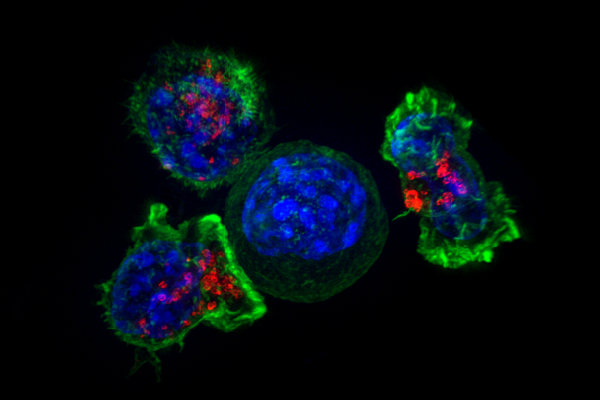Killer T cells surround a cancer cell. Credit: NIH
Researchers at the Institute of Modern Physics (IMP) of the Chinese Academy of Sciences (CAS), together with their collaborators, have formulated China's first ion therapy guideline with reference to the latest clinical evidence at home and abroad.
The guideline, published in Precision Radiation Oncology on June 22, provided important guidance for ion therapy practitioners in China.
With the rapid development of ion radiotherapy and the increase of proton and heavy ion therapy centers in China, ion radiotherapy, which serves as a promising radiotherapy technology, has been applicable to more and more indications. Nevertheless, there has not yet been any consensus to guide clinical practices based on China's circumstances and current situation of ion radiotherapy.
In this guideline, the researchers briefly reviewed the history of ion therapy and its present application situation, and then introduced the physical and biological characteristics of protons and heavy ions.
After evaluating the ion treatment indications and summarizing the main heavy ion therapy patterns of Japan and Shanghai, the researchers put forward the recommended schemes of ion therapy to various cancers and the dose constraints for organs at risk, specified the implementation process and follow-up and summarized the common complications of ion therapy.
"The guideline will play an important role in promoting the popularization and application of ion therapy technology in China, which will benefit the majority of cancer patients," said Wang Xiaohu, a researcher at IMP and also a team leader of the ion therapy group of Chinese Medical Association, Chinese Anti-Cancer Association and Chinese Medical Doctor Association, who organized over 30 experts from more than 20 medical institutions in China to formulate this guideline together.
More information: Qiuning Zhang et al, Chinese ion therapy guideline (Version 2020), Precision Radiation Oncology (2021). DOI: 10.1002/pro6.1120
Provided by Chinese Academy of Sciences






















